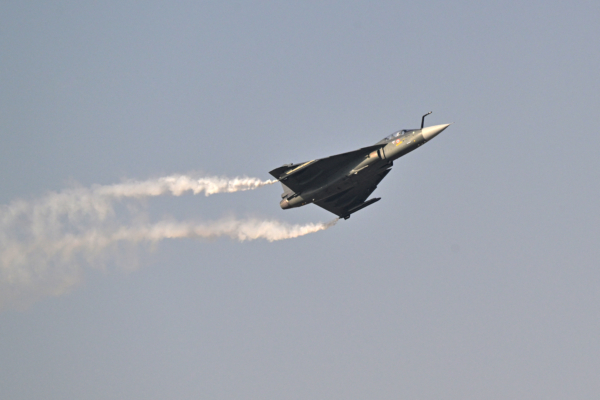On Friday, November 21st, an Indian-made Tejas fighter jet crashed and turned into a fireball during a flying display at the Dubai Airshow, tragically resulting in the death of the pilot. This was the second known crash of this model since its first test flight in 2001. The Indian Air Force has announced an investigation into the cause of the accident.
The Tejas fighter jet crashed at Dubai World Central a little after 2 p.m. local time (10:00 Greenwich Mean Time) on the last day of the airshow. The Indian Air Force (IAF) later confirmed on social media that the pilot suffered “fatal injuries” and announced the formation of an investigative committee to determine the cause of the accident.
Jignesh Variya, 46, who was visiting the airshow with his family, witnessed the crash. He told Reuters that the aircraft had only been in the air for eight to nine minutes, completed two to three loops, then entered a dive before crashing.
“When it hit the ground, I saw three fireballs rise into the sky,” he said. “Everyone in the crowd stood up, and about 30 seconds later, emergency vehicles rushed to the crash site.”
The Dubai government released photos of an emergency team swiftly clearing the scene and described the pilot’s death as a “tragedy.”
Despite the accident, the Dubai Airshow, the world’s third-largest aviation event, resumed flying displays less than two hours after emergency responders cleared the area.
Manufactured by Hindustan Aeronautics Limited (HAL), the Tejas fighter jet is seen as a key indigenous project for the Indian Air Force to replace its aging fleet of MiG-21 aircraft and symbolizes India’s efforts to modernize its fleet.
Francis Tusa, a defense analyst based in the UK, told Reuters, “This is the first fighter aircraft designed entirely domestically in India rather than based on a foreign design.”
He added, “Work is currently underway on the development of the Tejas Mark II.”
The Indian Air Force stated in a release that a committee is being set up to determine the cause of the accident.
The aircraft is powered by General Electric (GE) engines. This crash marks the second known crash of the Tejas model since its first test flight in 2001. The first crash occurred during a domestic exercise in India in 2024, with the pilot surviving.
General Electric stated preparedness to support the investigation. “We are deeply saddened by the loss of the Indian Air Force Tejas fighter jet at the Dubai Airshow and express heartfelt condolences to the pilot’s family,” the statement read. The Dubai government stated that an emergency team is managing the situation onsite.
Accidents at air shows were common in the 1970s, but with tightened safety regulations in recent decades, incidents in premier aerospace events have become rare.
In 1999, a Su-30 fighter jet crashed during a similar maneuver at the Paris Air Show; a decade prior, a MiG-29 also crashed at the same event. All crew members safely ejected.
In 2015, an aging Hawker Hunter fighter jet crashed after a small display on the southern coast of England. In 2019, the UK took action to halt aerobatic displays at the Farnborough Airshow during public days.

